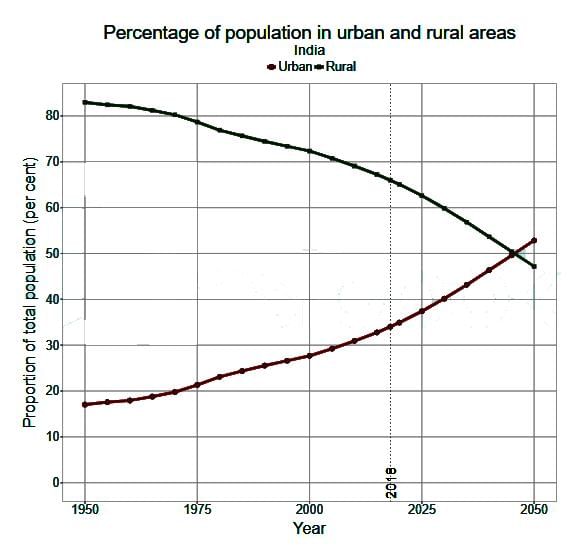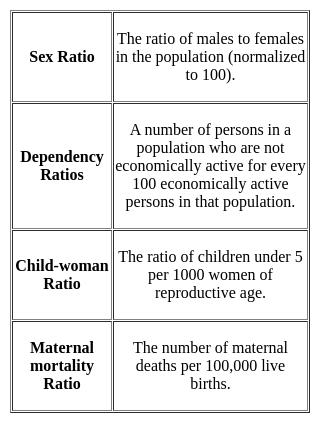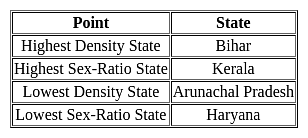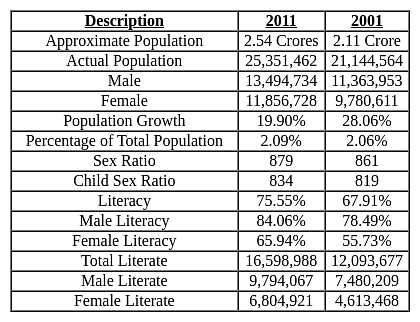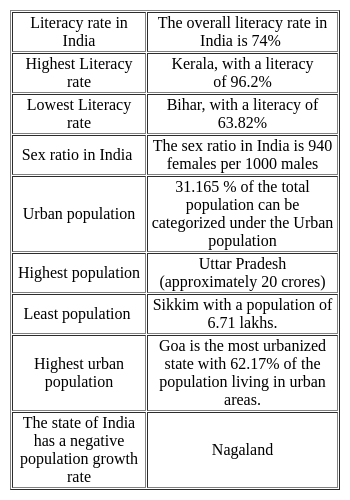Software Development Exam > Software Development Tests > Test: Census of India - Software Development MCQ
Test: Census of India - Software Development MCQ
Test Description
20 Questions MCQ Test - Test: Census of India
Test: Census of India for Software Development 2025 is part of Software Development preparation. The Test: Census of India questions and answers have been prepared
according to the Software Development exam syllabus.The Test: Census of India MCQs are made for Software Development 2025 Exam.
Find important definitions, questions, notes, meanings, examples, exercises, MCQs and online tests for Test: Census of India below.
Solutions of Test: Census of India questions in English are available as part of our course for Software Development & Test: Census of India solutions in
Hindi for Software Development course.
Download more important topics, notes, lectures and mock test series for Software Development Exam by signing up for free. Attempt Test: Census of India | 20 questions in 20 minutes | Mock test for Software Development preparation | Free important questions MCQ to study for Software Development Exam | Download free PDF with solutions
Detailed Solution for Test: Census of India - Question 1
Test: Census of India - Question 2
As per 2011 census, the population of Haryana forms approximately _____ per cent of India’s population.
Detailed Solution for Test: Census of India - Question 2
Test: Census of India - Question 3
What is the population growth rate of Haryana, as per census 2011?
Detailed Solution for Test: Census of India - Question 3
Detailed Solution for Test: Census of India - Question 4
Test: Census of India - Question 5
This district has the highest literacy rate in Haryana as per census 2011
Detailed Solution for Test: Census of India - Question 5
Test: Census of India - Question 6
As per the Census-2011, the population density of Haryana is (in per square k.m)
Detailed Solution for Test: Census of India - Question 6
Test: Census of India - Question 7
Sirsa district occupies which position in population of Haryana state as per the 2011 census?
Detailed Solution for Test: Census of India - Question 7
Test: Census of India - Question 8
According to census 2011, which of the following percentage depict the level of urbanization in India ?
Detailed Solution for Test: Census of India - Question 8
Test: Census of India - Question 9
The district of Haryana which recorded the lowest child Population as per Census 2011 is
Detailed Solution for Test: Census of India - Question 9
Test: Census of India - Question 10
The first census of Independent India was conducted in ______.
Detailed Solution for Test: Census of India - Question 10
Test: Census of India - Question 11
In which among the following district of Haryana, the sex ratio declined from 2001 census to 2011 census?
Detailed Solution for Test: Census of India - Question 11
Detailed Solution for Test: Census of India - Question 12
Detailed Solution for Test: Census of India - Question 13
Detailed Solution for Test: Census of India - Question 14
Test: Census of India - Question 15
Which of the following has became the first State in India to start the Caste based census in 2023?
Detailed Solution for Test: Census of India - Question 15
Detailed Solution for Test: Census of India - Question 16
Test: Census of India - Question 17
Which states of India have the lowest and highest Infant Mortality Rate respectively?
Detailed Solution for Test: Census of India - Question 17
Test: Census of India - Question 18
Which of the following years is called the 'Great Dividing Year' of India's population?
Detailed Solution for Test: Census of India - Question 18
Test: Census of India - Question 19
What is the density of the population of India as per 2011 census?
Detailed Solution for Test: Census of India - Question 19
Test: Census of India - Question 20
Which of the following is NOT covered under the definition of a Urban Settlement as per the Census of India?
Detailed Solution for Test: Census of India - Question 20
Information about Test: Census of India Page
In this test you can find the Exam questions for Test: Census of India solved & explained in the simplest way possible.
Besides giving Questions and answers for Test: Census of India, EduRev gives you an ample number of Online tests for practice
Download as PDF




